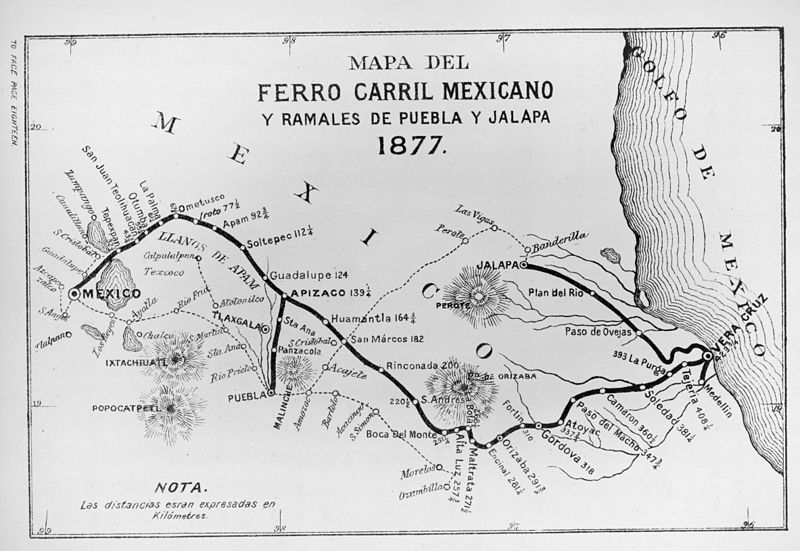The painting The Metlac Ravine looks just like a huge postcard from the past. It captures the monumental nature of the southern, coastal state of Mexico-Veracruz and the speeding modernization of the country that took place in the second part of the 19th century.
José María Velasco Gómez (1840-1912) was the most famous landscape painter in Mexico and a renowned documentalist of the flora and fauna of this country. This particular painting showcases his fascination with the vast natural richness and diversity of Mexico. He used it in his art to celebrate the national identity and patriotism of a fairly young republic (Mexico became an independent state in 1821). This work also presents the early industrialization that Mexico went through during the author’s lifetime. The theme of the Metlac River is obvious. The imminent future, symbolized by the train, painted in the right-hand corner, overtakes nature, cuts the scenery, and moves towards the viewer with a whoosh.

In the background of the painting, we see the Pico de Orizaba, also known as Citlaltépetl (from Nahuatl: citlal(in) = star, and tepētl = mountain), the highest mountain in Mexico. It is a dominant element of the whole painting, against which others are presented. This composition evokes the series of landscape prints by Hokusai: Thirty-six Views of Mount Fuji (produced 1830-1832) in Japan.

The Metlac River and its canyon are hardly visible. One needs to focus to be able to spot its flow behind the bushes in the bottom left corner of the work. Its direction is similar to that of the train, though the curve of the railroad is stronger and sharper. However, it still mimics the natural riverbed of Metlac.

The railroad depicted here was built in 1877. It connected the capital with the biggest and oldest seaport in Mexico- Veracruz. Its creation was a tremendous endeavor for the private investors and central government. The building of the rail network afforded better control of the land as well as the promotion of trade and economic development. Velasco, by introducing the train into this landscape painting, points out the social and economic changes that happened during his life.

In the front of the painting, Velasco concentrates our sight on flora, various shrubs, trees, and cacti typical to Veracruz state. They are depicted in detail, ensuring that the diversity of natural forms is represented realistically. This is also the place from which we can view two main elements that build the narration of this scene: the Pico de Orizaba and the locomotive engine with the steam.

In the archives of Southern Methodist University, a photo can be found that captures a similar moment, although we cannot see the train, just the steam over the railroad in the Metlac Canyon. The photo gives us another opportunity to appreciate the style and talent of José María Velasco Gómez. In comparison, we can see how he was able to grasp the details and still show the story of the interplay of two forces that shape reality: nature and human agency.

José María Velasco Gómez in this work shows himself to be not only an excellent student of the biology and geography of his motherland, but also a witty, astute chronicler of his times.
